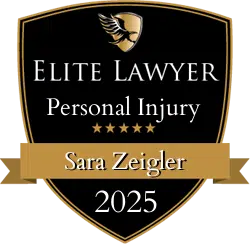Many passenger car drivers get extremely nervous on the highway around tractor-trailers. The sheer size of these carriers is intimidating, and anyone who has ever seen the aftermath of a tractor-trailer accident understands the massive destructive force big rigs can wield at highway speeds. Unfortunately, motorists who tense up while close to commercial trucks can actually increase the likelihood of an accident. By understanding what you need to do to share the road with big-rigs can put you at ease and keep you safe.
Commercial trucks differ from passenger cars in three major areas:
- Longer blind spot
- Longer stopping distance
- More limited maneuverability
Fully appreciating these differences and adjusting your driving habits accordingly can keep you safe around big-rigs. Here are a few tips:
- Know the blind spots and stay out of them — If you cannot see the trucker’s side-view mirror, the trucker cannot see you. If you’re traveling in the truck’s blind spot and its turn signals start flashing, it may be too late to avoid a collision.
- Take care to pass — Building on the previous point, if you’re going to pass a commercial truck, you have to move swiftly through the blind spot. Also, whenever possible, you want to have clearance to your left, so if the truck signals a lane change in your direction while you are passing, you are able to move over.
- Don’t cut the truck off — If, after passing, you are going to re-enter the lane, don’t crowd the front of the truck. Give yourself at least a 20-foot lead before retaking the lane. You need to remember that the truck needs more distance to stop than you do. If you have to hit your brakes, the truck may not be able to stop without rear-ending you.
- Don’t tailgate — It may seem counter-intuitive, given what we’ve just said about the truck needing a greater distance to stop. But it’s important to remember that the truck is usually traveling at a slower speed than passenger cars on the same highway. This difference in speeds makes it far too easy for a tailgating car to slam into the rear of the trailer.
- Anticipate wide turns — A tractor-trailer making a 90-degree right turn must swing left into the adjacent lane before correcting to turn right. Don’t ever think you can squeeze by while the turn is being made, or the side of your car might be crushed.
We hope these tips, and a healthy dose of patience, can keep you safe on the roads of the Mountain State.
If you’ve been injured in a truck accident in West Virginia, consult an experienced personal injury attorney at Kaufman & McPherson, PLLC.








